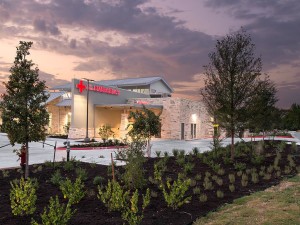 After remaining relatively stable during the latest recession, the health care real estate market appears on the cusp of explosive growth. Here are eight signs of the favorable opportunities existing in health care real estate:
After remaining relatively stable during the latest recession, the health care real estate market appears on the cusp of explosive growth. Here are eight signs of the favorable opportunities existing in health care real estate:
1- Medical office vacancy rates nationwide are at their lowest level, 10.9 percent, since the 2008 recession. Furthermore, much of the vacancies exist in older, less adaptable buildings, meaning they aren’t an option for many practices seeking space. The impact of the recession and the uncertainty caused by the lengthy debate on the Affordable Care Act caused health organizations to shutter new construction. At the same time, demand for health care services increased. Now that the recession is in the rear-view mirror and the ACA’s impact is clearer, the industry is again looking to expand.
2- The need to expand health care services has never been greater. Millions of Americans now have greater access to health care because of the ACA; imagine, for instance, how the auto industry would benefit if a new law created 30 million newly licensed drivers. Additionally, the elderly population aged 65 and over, the most predominant users of health care services, is projected to increase by 79.2 percent through 2030.
3- Medical construction has been on the decline, but signs point to a pickup in development in the coming years. One of the biggest impacts caused by the ACA is the focus on cutting costs. To meet this requirement, health care systems are looking to move care away from expensive hospital settings and more to satellite offices. The trend of moving care away from inpatient to outpatient will continue as a result. This will require the building of ambulatory facilities and medical office buildings designed to deliver cost-effective care. But even with the new facilities being built, many medical providers are still attempting to attract both customers and providers to their existing campuses by adding specialty services and amenities such as health clubs, retail stores and restaurants.
4- There is a surge in demand for senior care facilities due to the aging population and increased life expectancy. Independent living facilities, memory care services and advanced nursing care options are being developed and populated in large quantities.
5- The industry is discovering the previously ignored fourth ‘P’ of traditional marketing: Place. The industry has little control over what they can charge, and the ACA will further limit that. Thin operating margins hinder promotional efforts. So health systems and physician practices are discovering that being located in the right places helps them get their products out to the masses. This has led to the retailization of health care, whereby facilities are relocating to convenient, accessible locations in retail hubs.
6- The increasing role of technology in health care will require updating many facilities and in many cases, completely new ones. One section of the ACA is a directive to replace paper medical records with electronic information. Information technology is becoming so predominant in health care that many existing facilities are becoming obsolete. New health care real estate, on the other hand, will need to be sufficiently wired for advanced network access.
7- The investment climate is favorable in the health care arena. Transaction volume in health care real estate remained relatively stable during the recession compared with other sectors. This is because health care real estate has historically been stable and favorable demographic trends will continue that trend. In addition, the cost of borrowing is considerably low today and capital is flooding into this sector, with REITS paying aggressive prices for top-tier assets.
8- Many health care organizations are divesting real estate. This is being done both to achieve the economies of scale needed to operate in this new environment and to also generate an influx of capital to invest in caregiving operations. This trend has created an opportunity for third-party developers to both buy existing facilities and build new, then leasing them back to the health care organizations for a steady stream of income.
9- Like many other industries, health care is looking to go green. This is becoming a priority both for the environmental health of the communities they serve and to lower ongoing operating costs. Surveys point to about two-thirds of hospitals and health systems in the U.S. requesting environmentally friendly materials in their construction projects.
